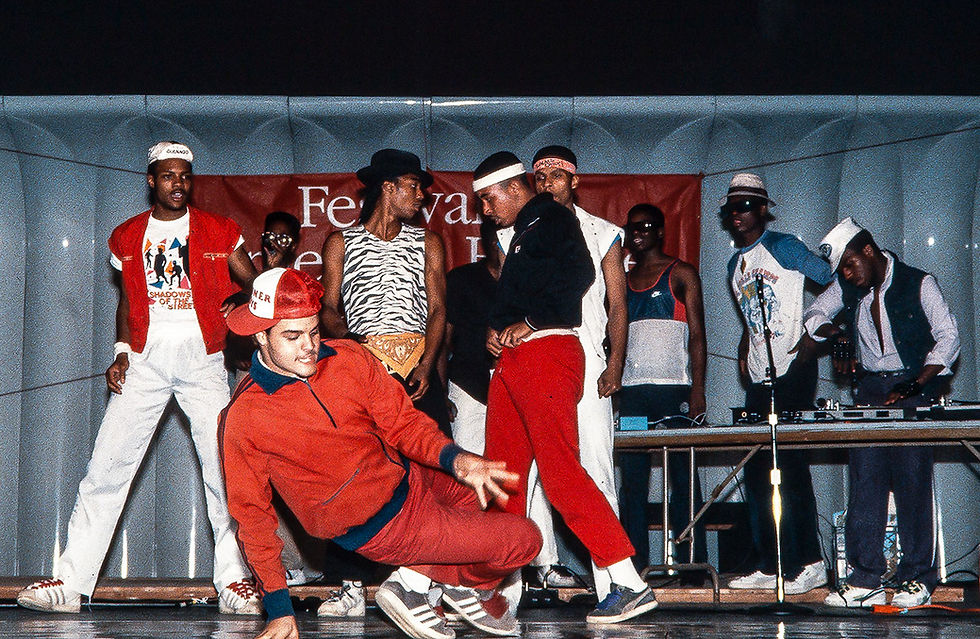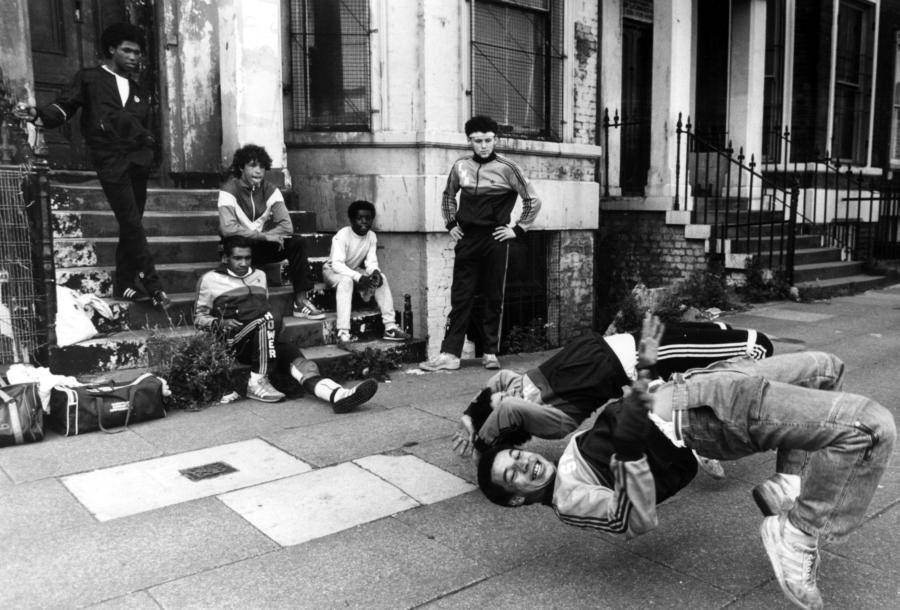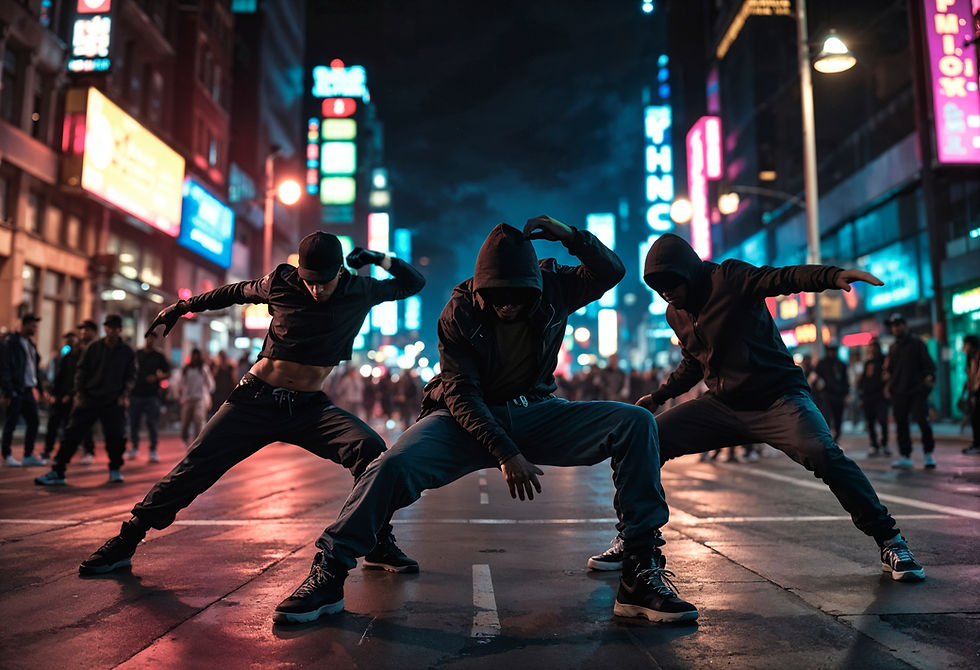Foundational Styles of Hip Hop Dance
- jere918
- 3 days ago
- 3 min read
Hip hop dance is more than just movement—it's a cultural expression that reflects the creativity, struggles, and stories of generations. Rooted in African-American and Latino communities of the Bronx in the 1970s, hip hop dance has since evolved into a global phenomenon. But at its core are the foundational styles that shaped its identity and laid the groundwork for countless modern dance trends.
In this post, we’ll explore the key foundational styles of hip hop dance—each with its own unique history, techniques, and cultural significance.

1. Breaking (B-boying/B-girling)
Breaking, often incorrectly called "breakdancing," originated in the Bronx in the early 1970s. It’s one of the original four elements of hip hop culture. Breaking includes four main elements:
Toprock – Upright footwork
Downrock – Ground-based moves
Power Moves – Acrobatic spins and rotations
Freezes – Stylized poses held at the end of a combo
Breaking made history in the 2024 Olympics as an official sport.🔗 Learn more on Wikipedia🔗 Why breaking was added to the Olympics (Vox)
2. Popping
Popping is a funk style dance that originated in Fresno, California, in the 1970s. Created by Boogaloo Sam, it involves quickly contracting and relaxing muscles to create a jerking effect—known as a "pop" or "hit"—in sync with the beat.
Popping has many substyles like tutting, roboting, and waving.🔗 What is popping? – The Demo Stop🔗 Dancehouse glossary on hip hop styles
3. Locking
Developed by Don Campbell in Los Angeles, locking involves freezing suddenly from a fast movement into a “lock,” and then continuing at the same speed. It’s highly animated and often performed with exaggerated expressions and funky gestures.
🔗 Locking explained – Learn Breakdance🔗 Hip Hop styles – Dancehouse Productions
4. House Dance
While house music came from Chicago, house dance blossomed in New York clubs in the 1980s. It blends elements from African, Latin, jazz, and tap dance, and emphasizes:
Footwork
Jacking (the torso groove)
Lofting and floorwork
It’s fluid, fast-paced, and deeply improvisational.🔗 House Dance Styles – Red Bull Guide🔗 Hip Hop Dance Glossary
5. Krumping
Krumping emerged in South Central Los Angeles in the early 2000s as a raw and powerful dance form, created as a way for youth to express themselves instead of engaging in violence. It features:
Stomps
Chest pops
Jabs
Arm swings
It's emotional, aggressive, and freestyle-heavy.🔗 Krumping on Wikipedia🔗 Types of Hip Hop Dance – Ablison
6. Uprock
Also known as Brooklyn Rock, uprock is a competitive, battle-oriented dance that incorporates quick foot shuffles, spins, and "burns" (mock gestures meant to humiliate an opponent). It’s typically danced to breakbeats and often performed in duels.
🔗 Uprock and Hip Hop Roots – Pressbooks Dance Appreciation
7. Waacking
Born in the underground disco clubs of 1970s Los Angeles, waacking features:
Expressive arm movements
Striking poses
Freestyle flair
Originally popularized by LGBTQ+ Black and Latino dancers, waacking combines rhythm, drama, and fashion.🔗 Dance Style Guide – Red Bull
8. Voguing
Voguing is a stylized dance from Harlem’s ballroom scene, where dancers strike poses inspired by fashion models. The dance includes:
Catwalks
Hand performance
Duckwalks
Dramatic spins and dips
Popularized globally by Madonna's “Vogue,” voguing remains an iconic symbol of queer Black and Latino culture.🔗 Voguing Explained – Medium🔗 Dance Appreciation – Pressbooks
Final Thoughts
Understanding the foundational styles of hip hop dance gives us more than just cool moves—it offers a window into cultural history, personal expression, and community resilience. Whether you're a dancer, fan, or curious learner, these styles reveal the depth and diversity that make hip hop a global movement.
Want to Dive Deeper?
Watch battles, documentaries, and interviews on platforms like YouTube and Red Bull Dance.
Take beginner classes at local studios or online platforms like Steezy.









Comentários